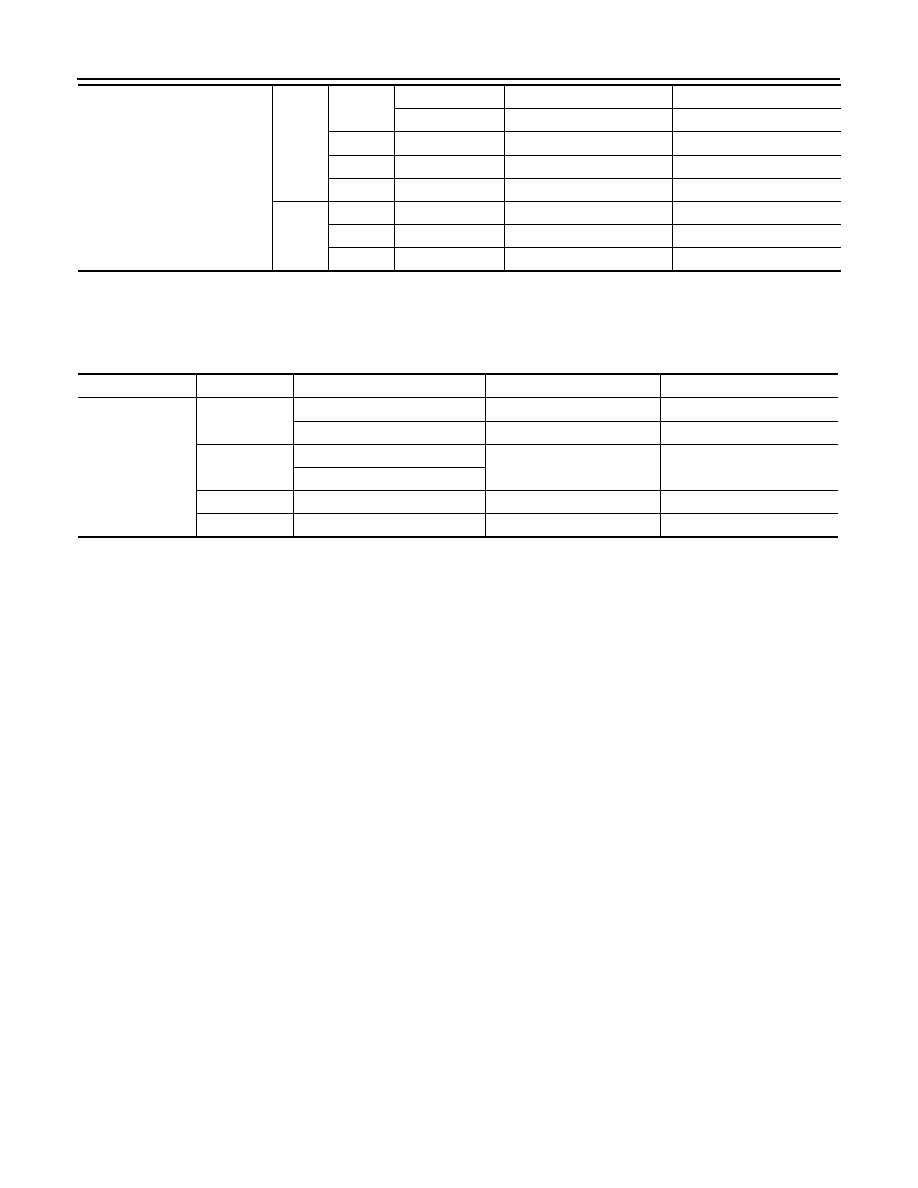Nissan Frontier D40. Manual - part 702

GI-32
< FEATURES OF NEW MODEL >
IDENTIFICATION INFORMATION
*1: Without roof rack
*2: With roof rack
Wheels & Tires
INFOID:0000000005272989
Minimum Running Ground
Clearance (with standard tires)
King
Cab
XE
235/75R15
193.4 (7.6)
—
265/70R16
218.2 (8.6)
226.1 (8.9)
SE
265/70R16
218.2 (8.6)
226.1 (8.9)
Pro-4X
265/75R16
218.2 (8.6)
226.1 (8.9)
LE
265/65R18
218.2 (8.6)
226.1 (8.9)
Crew
Cab
SE
265/70R16
218.2 (8.6)
226.1 (8.9)
Pro-4X
265/75R16
218.2 (8.6)
226.1 (8.9)
LE
265/65R18
218.2 (8.6)
226.1 (8.9)
Drive Type
Grade
Road wheel
Tire
Spare tire size
All
XE
15 X 7J Styled Steel
P235/75R15
P235/75R15
16 X 7J Designed Steel
P265/70R16
P265/70R16
SE
16 X 7J Designed Steel
P265/70R16
P265/70R16
16 X 7J Aluminum Alloy
Pro-4X
16 X 7J Aluminum Alloy
P265/75R16
P265/75R16
LE
18 X 8J Aluminum Alloy
P265/60R18
P265/60R18